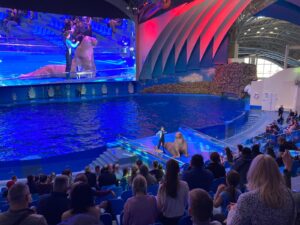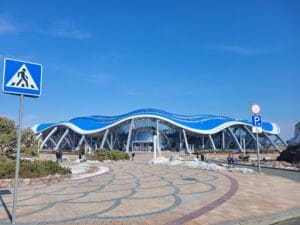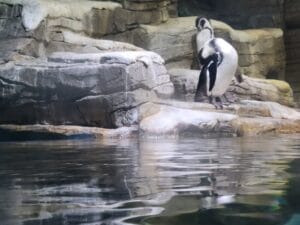The Primorsky Oceanarium is an educational center located on the Russky Island in Primorsky Krai, Russia. The main building of the Oceanarium has a modern look and unique shape, meant to symbolize a shell poking out of the blue sea.
The oceanarium focuses on educating visitors about Russia’s aquatic zones, meaning ocean, sea, and river life. Some exhibits also look at oceanography and aquatic life on a broader, more global scale.
The Primorsky Oceanarium is tourist oriented. All signs inside the main building have English, Chinese, and Japanese translations. Additionally, informational and explanatory texts about many of the exhibits have English and some have Chinese translations. The same is true for interactive screens and videos. The audio guides, however, are predominantly Russian.
Up to date information on tickets, available tours (in Russian or English), and scheduled animal feeding times can be found on their website.
History of the Primorsky Oceanarium
Construction on the Oceanarium began in 2010. It was originally scheduled to open just before the 2012 APEC Summit as part of a federally-funded renovation of the city meant to make Vladivostok itself a major attraction of the economic summit.
However, progress was slower than expected and the opening date was postponed several times. In September 2015, Vladimir Putin visited the Oceanarium with the Governor of Primorsky Krai, the Vice Premier of the State Council of China accompanied by other Chinese officials, and the actor Steven Seagal.
The official opening did not take place until September 2016, with the participation and attendance of Vladimir Putin. The Prime Minister of Japan, Shindzo Abe, and other top-level officials were present as well.
The Primorsky Oceanarium is funded by the National Scientific Center of Marine Biology, the Far Eastern Branch of the Russian Academy of Sciences. In fact, it is the first oceanarium in Russia to become a part of the Russian Academy of Sciences.
Facilities and Activities of the Primorsky Oceanarium
The Oceanarium has an impressive interior space exceeding 37,000 square meters, making it one of the largest in the world. Nearly five soccer fields could be placed inside the shell-shaped building. The left wing houses a main water tank with a 70-meter underwater tunnel. The right wing hosts the dolphinarium and its aquatic arena with seating for 800 people. In total, there are 135 tanks in the nine permanent exhibits that hold 15,000 cubic meters (150,000 liters) of water. Due to their large size, some tanks had to be installed before the building’s roof was complete.
The Primorsky Oceanarium holds charity programs focused on children’s needs. For instance, a monthly event called Ocean of Hope includes a free tour of the exhibits, music and dance events, and a dolphin encounter. The proceeds from these events are donated to orphans or children with disabilities. Additionally, in 2018 the Oceanarium launched a project for special needs children called Crystal Bridge. It is designed to provide academic-year classes for four children with developmental delays or autism spectrum disorder.
The Oceanarium also runs multiple education programs. For example, the Education Environment Project allows schoolchildren, university students, and children in orphanages or special education schools to participate free-of-charge in activities centered on the giant clamshell of Russky Island. The program runs October through May and hosted nearly 30,000 children in its first three years of operation. University students participate with the help of their teachers and are given lectures on biology, ecology, design, or engineering at the Oceanarium’s exhibits. The Growing Up at the Oceanarium project has several stages of clubs for children aged 6 to 17 to progress through. The goal of the project is to improve eco-literacy among youth and introduce them to aquatic life in Vladivostok and the professions that accompany it.
Visiting the Oceanarium (Spring, 2022)
My trip to the Oceanarium was with a small group of other international students from VSUES. For the best experience, I suggest dedicating an entire day for your visit and timing it according to your interests. For example, the dolphinarium runs twice a day, Thursday through Sunday.
The Oceanarium is 30-minute taxi ride from VSUES campus and costs approximately 500 rubles on Yandex Go. There are some cool sites to see along the way, such as the Russky Island coastline and Far Eastern Federal University campus. My group was dropped off at the Oceanarium entrance, which is a 20-minute walk from the main building. A shuttle runs every 15 minutes, however going by foot is pleasant and also includes interesting things to find and see.
There are large rocks with ocean themed animals and décor surrounding the building. This area has a paved walkway which also allows you to view the unique building shape from several angles. Upon entering the main building, you go through a security checkpoint with a metal detector and bag searching station. After dropping off your coat downstairs, the self-guided tour begins.
The first exhibit is the Evolution of Life in the Ocean. It takes you back in time to the origin of the solar system to learn about modern theories of Earth’s history, the formation of the ocean, and the origin of life. Microworld, the second exhibit, shows a world that is invisible to the naked human eye, but forms the foundation of all food chains in the ocean and determines the stability of marine ecosystems. Visitors can see enlarged models of microscopic organisms and learn how a microscope works.
Exhibits three through six take visitors through all the aquatic regions of Russia. Rivers and Lakes introduces visitors to a variety of natural landscapes, animals, and plants of the Amur River Basin, which lies on the Sino-Russian border. Murals and video walls show the sceneries and wildlife of Lake Khanka (Primorsky Krai’s largest lake) and Lake Baikal (the world’s largest fresh water lake by volume, located in Siberia). Polar World recreates the atmosphere of the Arctic and Antarctica. It shows the uniqueness of wildlife in those regions, narrates the role Russia has played in the exploration of high latitudes, and teaches visitors about the heroic deeds of polar pioneers. Here visitors can see penguins and watch two films: one shows the Mir submarine diving in the Arctic Ocean, and the other covers animals living in the south pole. The Bering Sea and Sea of Okhotsk introduces visitors to the bulk of fish and seafood caught in the Russian Federation. This exhibit’s also hosts playful Northern Fur Seals, which move joyfully for visitors in their pool. Lastly, the Sea of Japan/East Sea covers in the detail the warm and cold ocean currents that give rise to the sea’s wealth and wildlife abundance.
Exhibits seven through nine take visitors through aquatic regions of the world. Ocean Abyss takes visitors the deepest depths of the ocean. It hosts one of the aquarium’s largest tanks, held up by 36-centimeter-thick acrylic glass. Sharks, sting rays, and pelagic schooling fish can be seen here. Tropical Seas allows visitors to closely view tropical marine life and hosts colorful coral reefs. This exhibits the 70-meter underwater tunnel with hundreds of fish. Thematic films help visitors learn about the structure of diversity in coral reefs and their reproduction. Finally, Tropical Rain Forest creates an equatorial forest environment with moist air, animal sounds, and a waterfall. Visitors can admire a large, diverse range of tropical plants, fish, reptiles, and insects.
Overall, the Primorsky Oceanarium is young and bursting with life. From the taxi ride to the nine unique exhibits, there is a lot to see and learn from a trip to this Vladivostok landmark. The Oceanarium can be expected to attract locals and tourist alike, continue its outreach work, and host top-levels officials from the Asia-Pacific region for years to come.
Other Attractions in Vladivostok
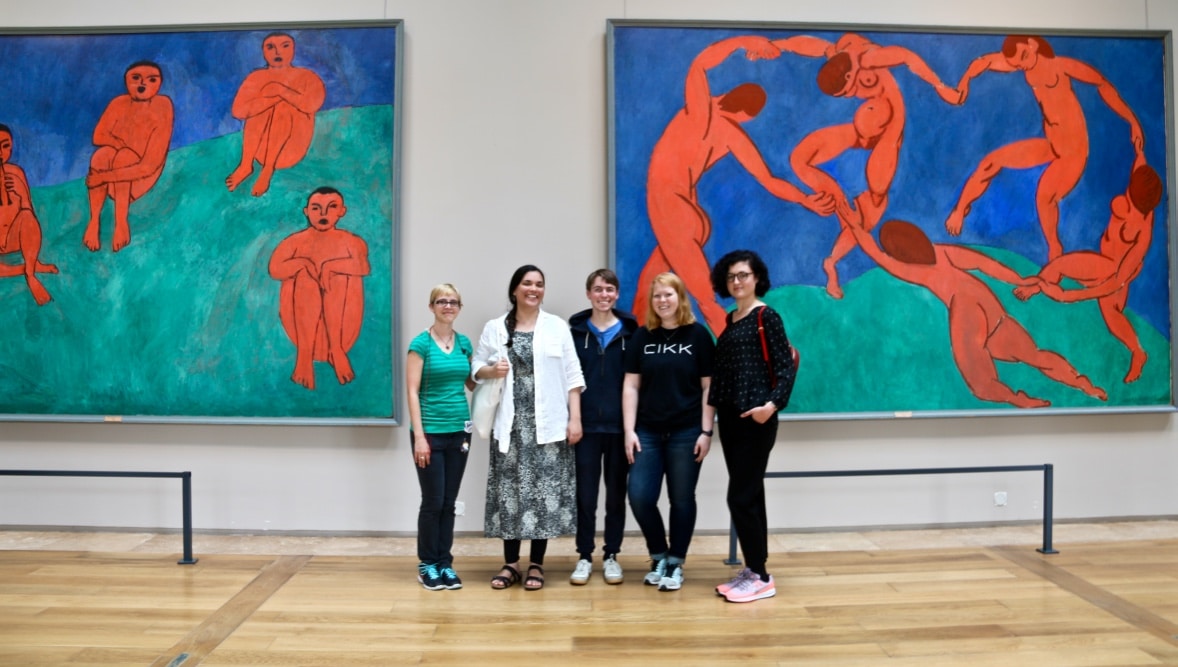
Museums as Self-Care
In 2018, doctors in Montreal began prescribing visits to the Montreal Museum of Fine Arts (MMFA) for patients experiencing depression, anxiety, and other health issues. This innovative approach to mental health treatment was launched under the initiative of the MMFA in collaboration with Médecins francophones du Canada (MFdC). The program allows physicians to provide patients […]
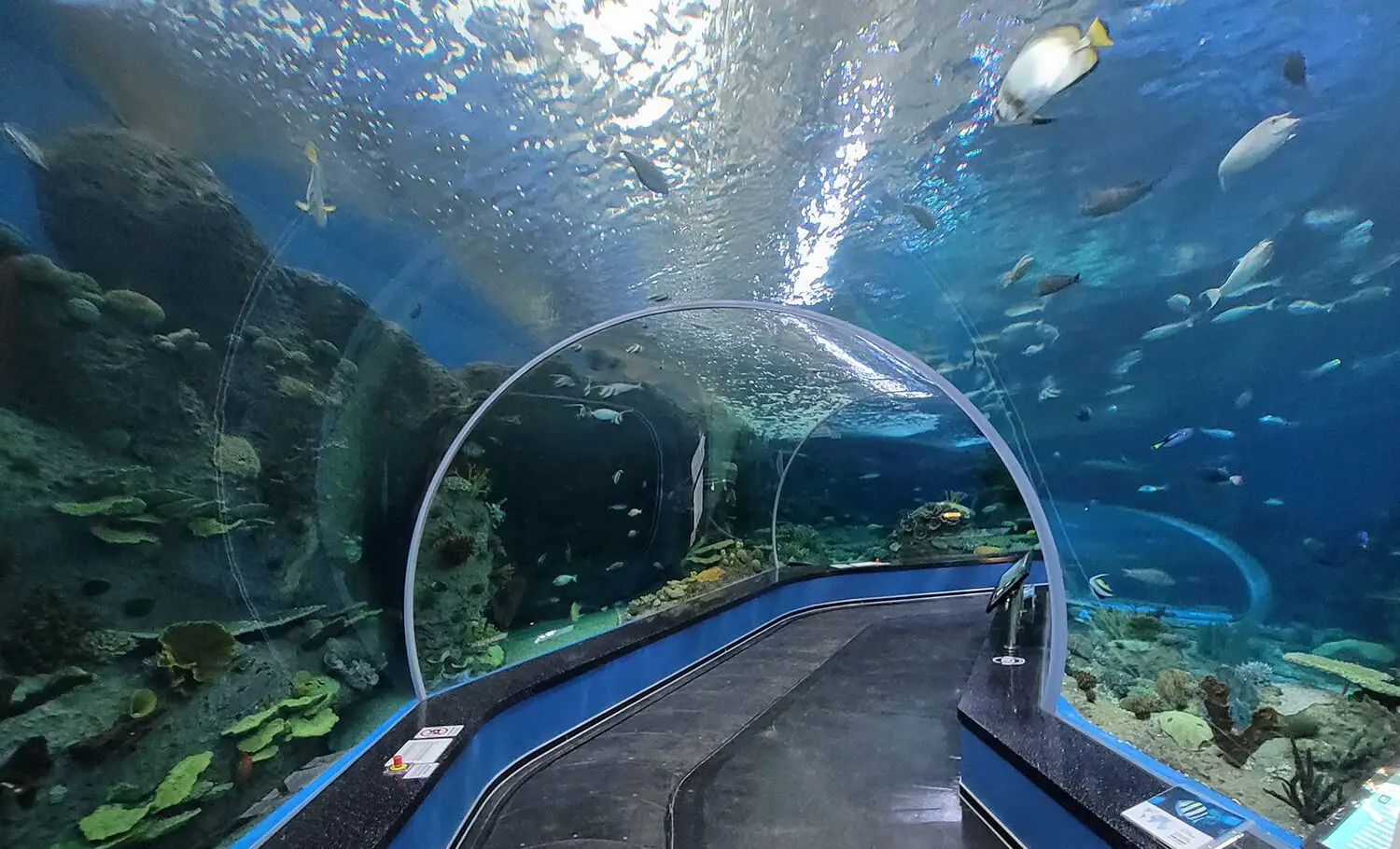
The Primorsky Oceanarium in Vladivostok
The Primorsky Oceanarium is an educational center located on the Russky Island in Primorsky Krai, Russia. The main building of the Oceanarium has a modern look and unique shape, meant to symbolize a shell poking out of the blue sea. The oceanarium focuses on educating visitors about Russia’s aquatic zones, meaning ocean, sea, and river […]
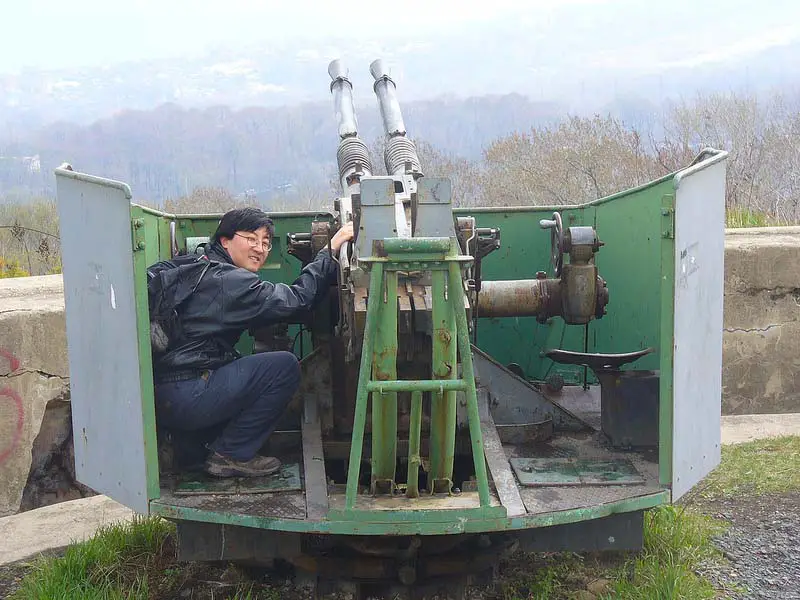
Vladivostok Fortresses and Tunnels
Russia only acquired Primorsky Krai, the region that contains Vladivostok, in the 19th century. China, the Mongol Empire and the Balhae and Jurchen nations had all controlled the area around Vladivostok before Russia gained it through the Treaty of Aigun with China in 1858. Vladivostok was founded primarily as a Russian military post rather than […]
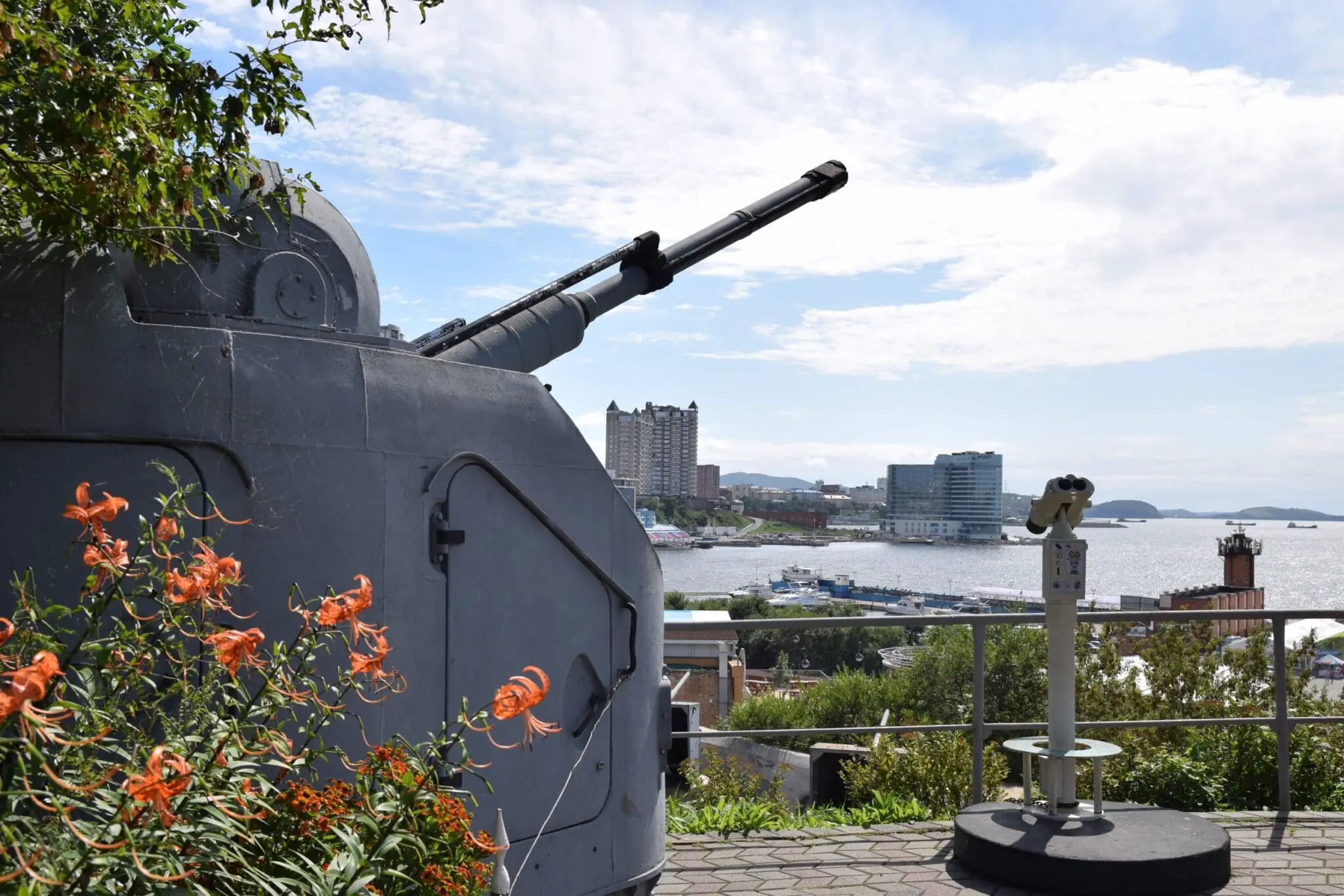
Guide to Vladivostok’s Top Museums
Vladivostok has a fascinating history and culture. To present this, it shares in Russia’s strong museum tradition, with many well-curated museums throughout the city. The city has long been a naval and trading port and thus has many museums specifically dedicated to this heritage. However, it also has a surprising number of art galleries and […]
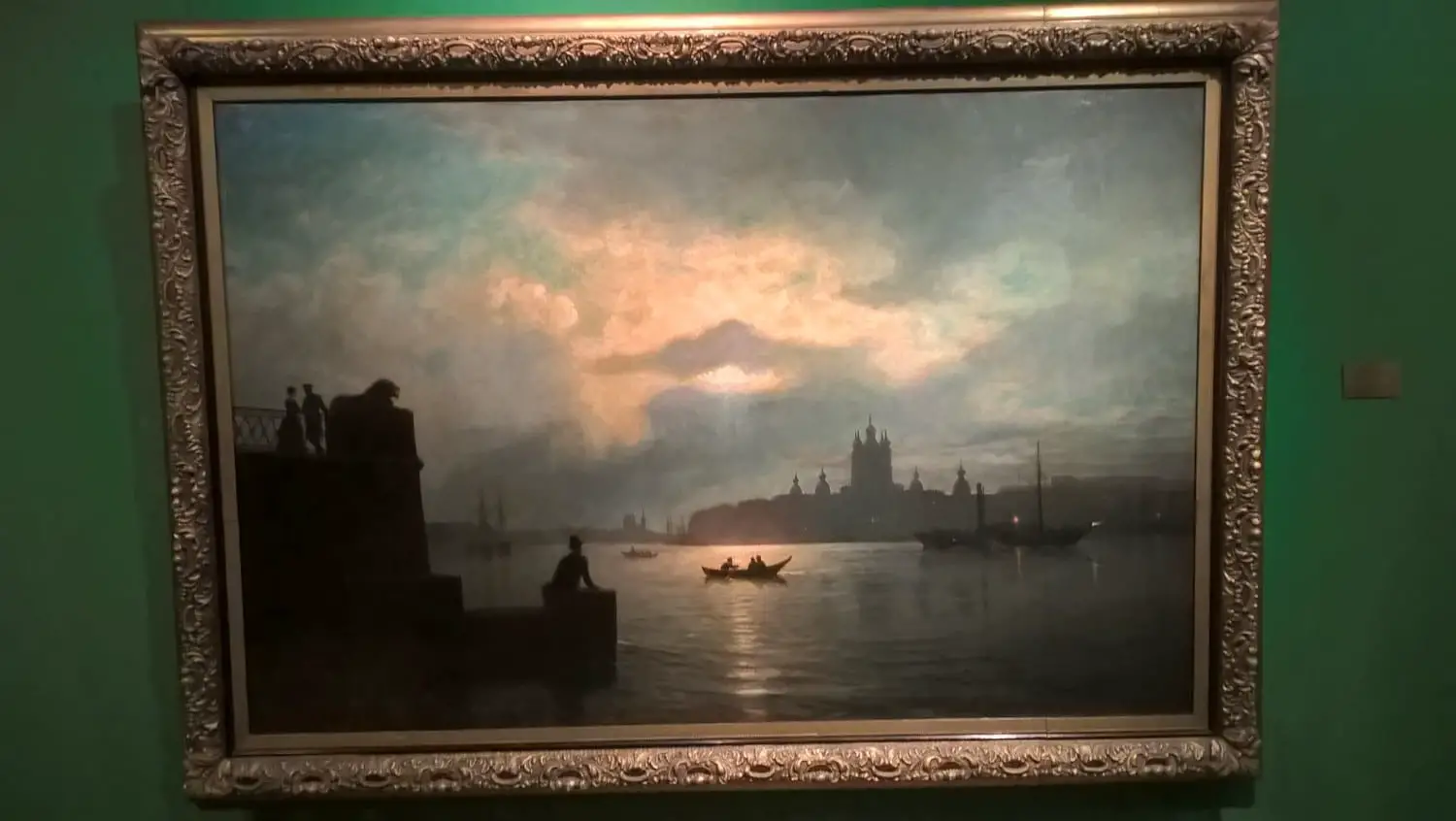
Primorye State Art Gallery in Vladivostok
Vladivostok’s main art gallery, a large stone structure, is located in the old part of the city, close to the train station, the city square, and the government administrative building. The first exhibition room featured French prints from the 19th century. These depicted a variety of landscapes, cities, and people both in Russia and from […]


